
Pool of Radiance is a role-playing video game developed and published by Strategic Simulations, Inc (SSI) in 1988. It was the first adaptation of TSR's Advanced Dungeons & Dragons (AD&D) fantasy role-playing game for home computers, becoming the first episode in a four-part series of D&D computer adventure games. The other games in the "Gold Box" series used the game engine pioneered in Pool of Radiance, as did later D&D titles such as the Neverwinter Nights online game. Pool of Radiance takes place in the Forgotten Realms fantasy setting, with the action centered in and around the port city of Phlan.
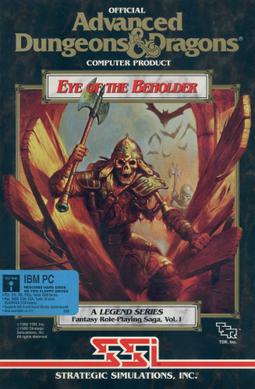
Eye of the Beholder is a role-playing video game for personal computers and video game consoles developed by Westwood Associates. It was published by Strategic Simulations, Inc. in 1991, for the MS-DOS operating system and later ported to the Amiga, the Sega CD and the SNES. The Sega CD version features a soundtrack composed by Yuzo Koshiro and Motohiro Kawashima. A port to the Atari Lynx handheld was developed by NuFX in 1993, but was not released. In 2002, an adaptation of the same name was developed by Pronto Games for the Game Boy Advance.

Curse of the Azure Bonds is a role-playing video game developed and published by Strategic Simulations, Inc (SSI) in 1989. It is the second in a four-part series of Forgotten Realms Advanced Dungeons & Dragons Gold Box adventure computer games, continuing the events after the first part, Pool of Radiance.

Might and Magic Book One: Secret of the Inner Sanctum is an early role-playing video game, first in the popular and influential Might and Magic franchise. It was released in 1986 as New World Computing's debut, ported to numerous platforms and re-released continuously through the early 1990s.
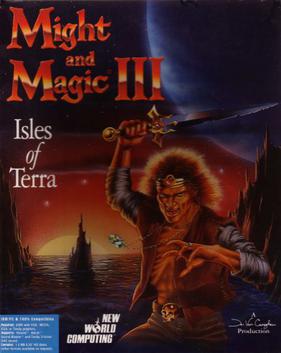
Might and Magic III: Isles of Terra is the third game in the role-playing video game series Might and Magic. Released in 1991, it is the predecessor to Might and Magic IV: Clouds of Xeen and the sequel to Might and Magic II: Gates to Another World. A Sega Genesis version was developed, but never released.

Conquests of Camelot: The Search for the Grail is a graphic adventure game released in 1990 by Sierra On-Line. It was the first game in the Conquests series designed by Christy Marx and her husband Peter Ledger. The only other game in the series was 1991's Conquests of the Longbow: The Legend of Robin Hood. Marx did the majority of the design work while Ledger created the game and package art.
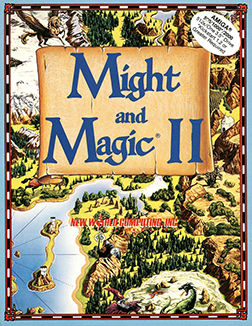
Might and Magic II: Gates to Another World is a role-playing video game developed and published by New World Computing in 1988. It is the sequel to Might and Magic Book One: The Secret of the Inner Sanctum.

Might and Magic IV: Clouds of Xeen is the fourth installment in the Might and Magic series by New World Computing.

Dragon Wars is a fantasy role-playing video game developed by Rebecca Heineman and published by Interplay Productions in 1989 and distributed by Activision.

Secret of the Silver Blades is the third in a four-part series of Forgotten Realms Dungeons & Dragons "Gold Box" adventure role-playing video games. The game was released in 1990.

The Magic Candle: Volume 1 is a role-playing video game designed by Ali Atabek and developed and published by Mindcraft in 1989.
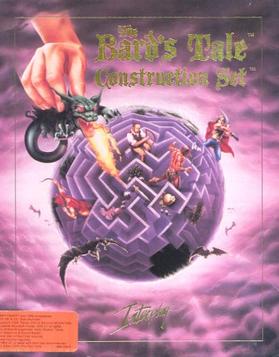
The Bard's Tale Construction Set is a computer game creation system that allows for the creation of dungeon crawl video games based on the Bard's Tale game engine. It was developed by Interplay Productions in 1991 and distributed by Electronic Arts. It was released for the Amiga and MS-DOS.
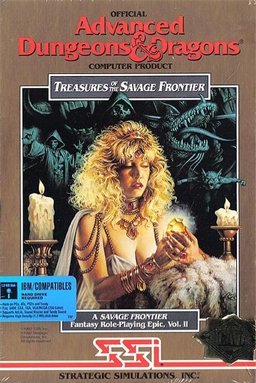
Treasures of the Savage Frontier (1992) is a Gold Box Dungeons & Dragons role-playing video game. It was developed by Beyond Software and published by SSI for the Amiga and DOS.
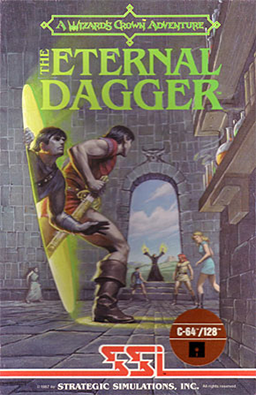
The Eternal Dagger is a top-down role-playing video game published by Strategic Simulations in 1987. It is a sequel to Wizard's Crown from 1986. Demons from another dimension are invading the world, and the only item that can seal the portal is the titular dagger. Players can transfer their characters over from Wizard's Crown, minus whatever magical items they had on them.
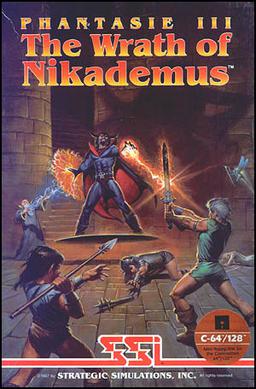
Phantasie III: The Wrath of Nikademus is the third video game in the Phantasie series.

Champions of Krynn is role-playing video game, the first in a three-part series of Dragonlance Advanced Dungeons & Dragons "Gold Box" games. The game was released in 1990. The highest graphics setting supported in the DOS version was EGA graphics. It also supported the Adlib sound card and either a mouse or joystick.

Legacy of the Ancients is a fantasy role-playing video game published by Electronic Arts in 1987.
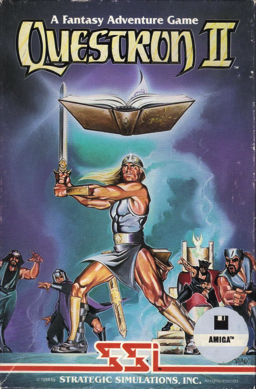
Questron II a 1988 role-playing video game published by Strategic Simulations for the Apple II, Apple IIGS, Atari ST, Commodore 64, IBM PC, and Amiga. It is the sequel to 1984's Questron. The story and original design is credited to Quest Software, the programming and artwork is credited to Westwood Associates.
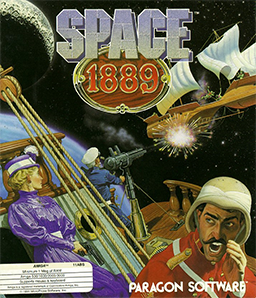
Space: 1889 is an adventure game developed by Paragon Software and published in 1990 for Amiga, Atari ST, and MS-DOS.

Alternate Reality: The City is a video game published by Datasoft, the first game in the Alternate Reality series. It was created by Philip Price, and was released in 1985. Gary Gilbertson created the music.




















